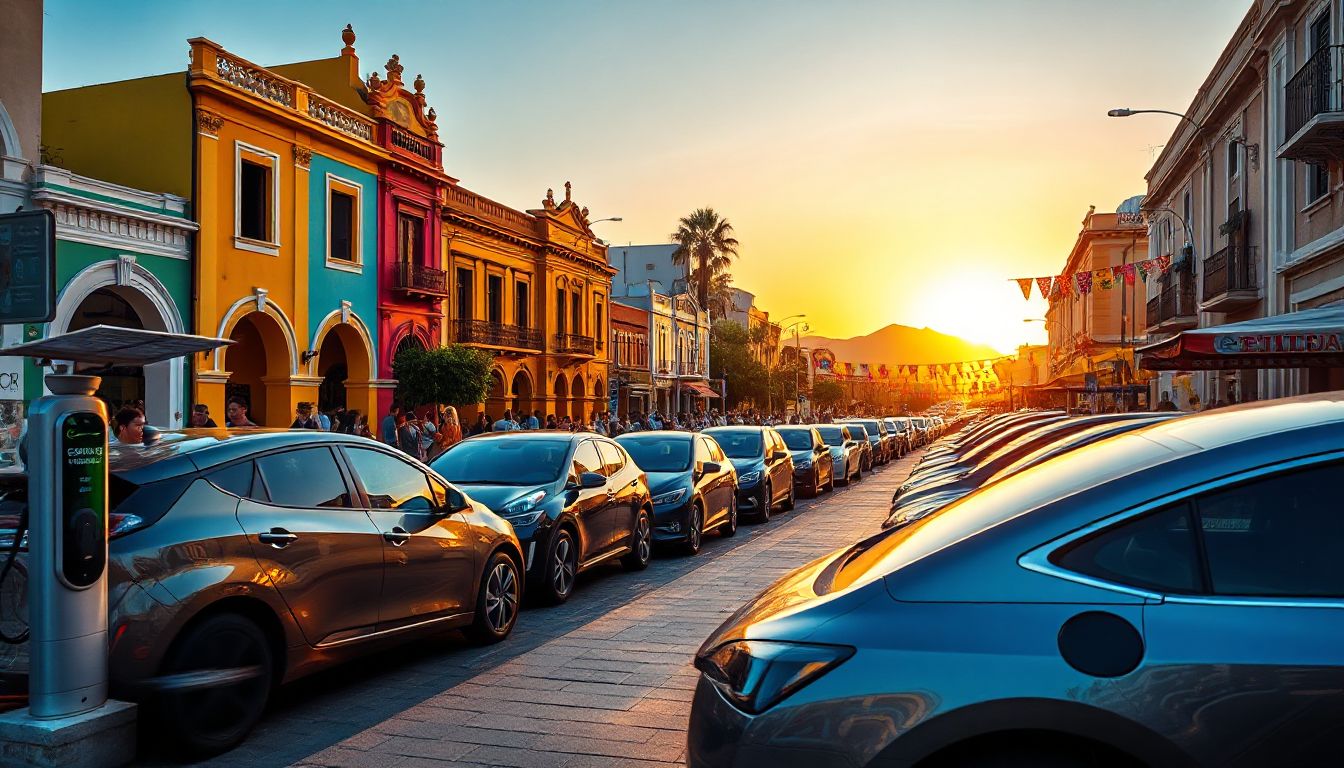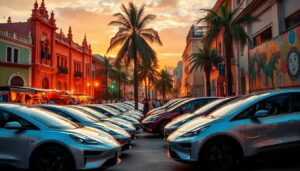Introduction
Electric vehicles are changing how we get around all over the world. Countries are making big moves to lower pollution and save energy. Mexico is part of this shift, working to adopt cleaner transport options. With cities growing and pollution rising, electric cars (EVs) could be a game-changer for Mexico’s environment and economy. This article will cover how EVs are growing in Mexico, the infrastructure being built, policies supporting cars that run on batteries, and what challenges still exist. We’ll also look at future chances for Mexico to lead in electric mobility.
The Growth of Electric Vehicles in Mexico
Market Overview and Adoption Rates
Mexico’s EV market is gaining ground. In recent years, the number of EVs registered in the country has gone up significantly. For example, in 2022, there were over 15,000 electric cars registered, a jump from just 5,000 five years earlier. Compared to regular gasoline-powered cars, EVs still make up a small part of the total vehicle fleet, but that’s changing fast. Many people are starting to see electric vehicles as a smart choice.
Key Factors Driving Adoption
Why are more Mexicans choosing EVs? First, people are becoming more aware of climate change and want to do their part. Saving money on fuel and avoiding rising gas prices also motivates many drivers. Plus, more electric models are hitting the market, and their technology keeps getting better. Features like longer battery life and faster charging make EVs more attractive than ever before.
Real-world Examples and Market Players
Some big brands are leading the way. Nissan, with its famous Leaf, remains popular in Mexico. Chevrolet is also pushing electric models like the Bolt EV. Cities like Mexico City and Guadalajara are seeing more EVs every year. In Mexico City, policies encouraging electric cars have helped boost sales and awareness.
Charging Infrastructure and Technology Development
Current State of Charging Stations
A big part of EV adoption depends on convenient charging spots. Mexico has around 2,000 public charging stations now, mostly in big cities. However, rural areas and small towns often lack enough charging points. This limits the ability of drivers to travel longer distances comfortably.
Advances in Charging Technology
Fast chargers have made a difference. They can power up an EV in less than 30 minutes—ideal for road trips. Home charging units are also becoming common, allowing owners to start each day with a “full tank.” Smart charging systems can even schedule charging when electricity is cheapest or cleanest.
Government and Private Sector Initiatives
The government is teaming up with private companies to build more chargers. For example, partnerships with PEMEX and investments from tech firms are helping expand the network. Incentives, like subsidized home chargers, encourage more people to install their own stations.
Policies and Incentives Supporting Electric Vehicles
Government Policies and Regulations
Mexico has laid out plans to promote EV use. The country committed to cutting emissions by 25% by 2030, and EVs are key to that goal. Some states, like Mexico City, have even stricter rules to support cleaner transport. These policies aim to make electric cars more attractive to consumers and manufacturers.
Incentives and Subsidies
Many buyers now get tax breaks or discounts when buying an EV. Some cities offer free parking or allow electric vehicles to enter low-emission zones where regular cars face restrictions. These perks make switching to electric more appealing.
Impact of Policies on Market Growth
Policies are helping grow EV sales. As regulations tighten and incentives increase, more Mexican drivers are considering electric cars. Industry experts say these policies are vital for pushing the country toward clean mobility.
Challenges Facing EV Adoption in Mexico
Infrastructure Limitations
While cities improve, the network of charging stations remains limited outside urban centers. Power grids also face challenges, especially in rural areas. Integrating renewable energy into the grid is needed to make EVs more sustainable long-term.
Economic and Supply Chain Barriers
EVs often cost more upfront than traditional cars. Mexico doesn’t have large local factories yet, and many parts, especially batteries, still come from abroad. Supply chain disruptions can hold back growth and keep prices high.
Consumer Awareness and Perceptions
Many Mexicans still have questions about EVs. Some worry about how far they can travel or how to charge the vehicles. Cultural attitudes and misinformation can slow adoption and limit interest.
Environmental and Regulatory Hurdles
Battery recycling is a concern. Without proper systems in place, old batteries can cause pollution. Mexico also needs tougher standards for vehicle emissions to encourage cleaner options.
Opportunities and the Future of EVs in Mexico
Market Potential and Growth Projections
Experts forecast EV sales will keep climbing. In the next decade, Mexico could see hundreds of thousands of electric vehicles on its roads. This growth will open doors for local manufacturers and new jobs.
Sustainable Transportation and Urban Planning
EVs can help design smarter cities. By integrating electric cars with public trains and buses, Mexico can reduce traffic and pollution. Such plans can make cities more livable.
Actionable Tips for Consumers and Stakeholders
If you’re thinking about buying an EV, explore incentives first. Choose the model that fits your needs. Governments should continue investing in infrastructure, and automakers should expand their offerings.
Industry Insights and Expert Opinions
Analysts agree Mexico’s EV market has strong potential. Experts say that with better policies and investments, Mexico can become a leader in electric mobility in Latin America. Innovation and collaboration are key to making this happen.
Conclusion
Mexico is on the path to cleaner transport. Electric vehicles are growing, but challenges remain. Building more charging stations, creating better policies, and raising awareness are crucial. The country has a real chance to lead in electric mobility in the region. By working together, Mexico can turn electric vehicles into a smart, sustainable choice for everyone. This shift isn’t just good for the environment—it’s a smart move for Mexico’s future.




